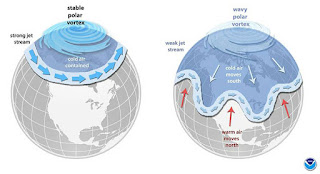Turns out, when you heat up ice, it melts. And with 2017 likely going down as one of the warmest years on record worldwide, this year's climate change signal was amplified at the Earth's poles.
There, decades-old predictions of intense warming have been coming true. The ice-covered poles, both north and south, continue to change at a breathtaking pace, with profound long-term consequences, according to the scientists who study them closely.
2017 Year in Review Series
And the consequences are destined to spill over into other parts of the globe, through changing atmospheric patterns, sea currents and feedback loops of ever intensifying melting.
The past year may not have broken annual records, but it provided ample evidence of where long-term trends are heading. "Even though we're not setting records every year—and we don't expect to because of natural variability—we're not any where close to the averages we saw in the 1980s, 1990s and before," said Walt Meier, a senior researcher at the National Snow and Ice Data Center.
- The area covered by sea ice in the Arctic hit record lows through the winter of 2017. In March, when the sea ice hit its largest extent of the year, it was lower than it ever had been in the nearly 40-year satellite record. The spring melt began a month earlier than normal, and though the pace of decline slowed some over the summer, the Bering and Chukchi Seas along Alaska's coast remained ice-free longer into the fall than ever before.
- In November NASA reported that two to four times as many coastal glaciers around Greenland are at risk of accelerated melting than previously thought. Greenland is losing an average of 260 billion tons of ice each year. In mid-September a surge of warm air caused a spike in surface melting in southern Greenland—one of the largest spikes to occur in September since 1978.
- In Antarctica the ice also recorded new lows. The annual low-point in ice coverage, which happened in early March, was the lowest on record. A few months later, in July, a trillion-ton section of Antarctica's Larsen C ice shelf broke off.
When the Jet Stream Gets Loopy
The consequences are profound.
The modern weather system has been defined by cold poles and warmer mid-latitudes. Along the boundary of the regions, where the cold air meets the warm, you'll find bands of strong wind, known as the jet stream.
"It's basically extreme weather when you get that loopy jet stream," said Meier.
A growing body of science—some of which was recently published—is finding that as there are more years with historically low sea ice levels, there is an associated uptick in wobbly jet streams.
Read more at Polar Ice Is Disappearing, Setting Off Climate Alarms

No comments:
Post a Comment